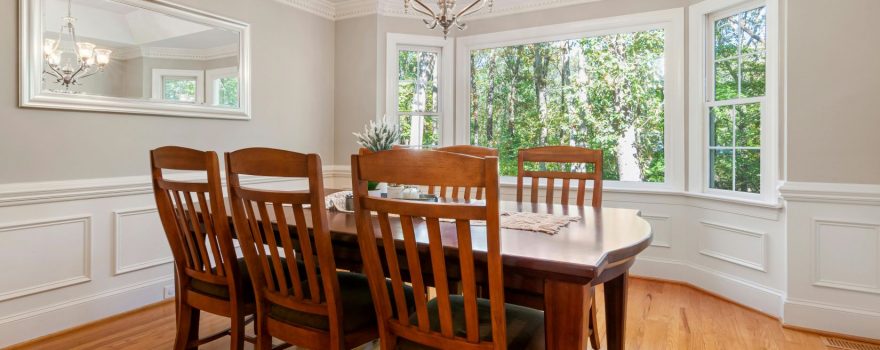Moulding
Decorative Moulding Ideas to Transform Any Room in Your Home

DIY Home Upgrades With Decorative Moulding
Decorative moulding can elevate any room in your home, transforming plain spaces into stunning showcases of style and elegance. Whether you want to enhance ceilings, frame doorways, or add character to walls, decorative moulding offers endless possibilities.
- Crown moulding: Ideal for giving a polished look to the junction where walls meet the ceiling.
- Baseboard moulding: Essential for finishing off the gap where your walls meet the floor.
- Interior trim: Provides a seamless and finished appearance to your room’s details.
Each type of moulding serves a unique purpose and can complement any design style, from traditional to contemporary.
Adding decorative moulding is not just about aesthetics; it also increases your home’s value.
If you’re considering a home renovation project, check out Builders Surplus or call us at 866-739-1636 for expert guidance and a range of affordable moulding options in Rhode Island, Connecticut, or Massachusetts.
Types of Decorative Moulding
Decorative moulding is a versatile design element that can bring sophistication and style to any room. It serves both functional and aesthetic purposes, making it an essential component in home design. Let’s explore some popular types:
Crown Moulding
Crown moulding is a classic choice for enhancing the ceiling junction where walls meet the ceiling. Its curved profile adds elegance and draws the eye upward, making rooms appear taller and more spacious.
- Victorian Style: Known for its ornate details and intricate patterns, Victorian crown moulding can transform a room into a regal space. It’s perfect for those who love traditional and opulent designs.
- Craftsman Style: This style features simpler, straight lines and is ideal for homes with a more rustic or minimalist aesthetic. Craftsman crown moulding offers a timeless look that complements both modern and traditional interiors.
Baseboard and Casing Moulding
Baseboard moulding and casing provide a finished look by covering edges and gaps. They serve as the foundation for a room’s interior design.
- Baseboard Moulding: Installed at the base where the wall meets the floor, baseboards protect walls from kicks and scuffs. They range from simple to elaborate designs, allowing you to match them with your home’s style.
- Casing Moulding: This type of moulding frames doors and windows, concealing gaps and providing a seamless transition between the wall and these openings. Casing mouldings can be plain or decorative, depending on your design preference.
Chair Rail Moulding
Chair rail moulding is not just decorative; it also protects walls from damage caused by chairs. Positioned about 3 feet from the floor, it adds a horizontal line that can break up wall space and create visual interest.
Picture Rail Moulding
Picture rail moulding is a practical solution for hanging art without damaging walls. It runs horizontally along the wall, allowing you to easily change your artwork’s placement. This moulding is often used in galleries and homes with high ceilings.
Wainscoting
Wainscoting involves adding decorative panels to the lower portion of walls, offering both protection and style. It’s available in various designs, from simple beadboard to more intricate raised panels, and can be painted or stained to match your decor.
Each of these moulding types can enhance architectural details and add value and style.
Decorative Moulding Applications
Decorative moulding is more than just a finishing touch; it’s a powerful tool to redefine your spaces. Whether you’re aiming to add architectural detail to your ceilings or create striking wall accents, moulding can transform any room.
Enhancing Ceilings
Ceilings, often overlooked, can become a focal point with the right moulding and design choices.
- Ceiling Moulding: Crown moulding is a popular choice for adding elegance to ceilings. It creates a seamless transition between walls and ceilings, making rooms feel complete and polished. Using thinner profiles can give the illusion of higher ceilings, especially in rooms with lower heights.
- Painting Ceilings: A splash of color can lift your ceiling from flat to fabulous. Pastel shades help maintain a sense of openness, while bold colors can make a dramatic statement. Consider adding patterns or stenciled designs for a unique look.
- Popular Ceiling Options: Options like coffered ceilings and shiplap add texture and depth. Coffered designs, which use beams to create a grid pattern, are perfect for high ceilings and add a touch of luxury. Shiplap, traditionally used on walls, can offer a rustic charm when applied to ceilings.
Wall Accents
Walls are a blank canvas, and moulding can turn them into art.
- Wall Moulding: Adding moulding to walls can create depth and interest. Consider a full wall of moulding for a dramatic effect or a half wall to subtly define spaces within a room.
- Decorative Trim: Use trim to highlight architectural features such as fireplaces or built-in bookcases. Mixing styles, like simple baseboards with ornate crown moulding, can offer a layered, sophisticated look.
- Wall Junctions: Picture rail moulding is a great way to hang artwork without damaging walls. It provides flexibility in changing art placements and adds a decorative element to the room.
By integrating decorative moulding into your design, you can redefine the character of any room.
New England’s Largest Moulding Selection
At Builders Surplus, we believe that every home deserves a touch of elegance and personality. Decorative moulding is an excellent way to achieve just that. With a vast selection of moulding types, from crown moulding to baseboard and casing moulding, we have the perfect options to suit your style and needs.
Have questions or need guidance on decorative moulding? Contact Builders Surplus or call 866-739-1636 or drop by one of our locations to explore our wide selection and get expert advice for your home projects.
Photo by Curtis Adams on Pexels
